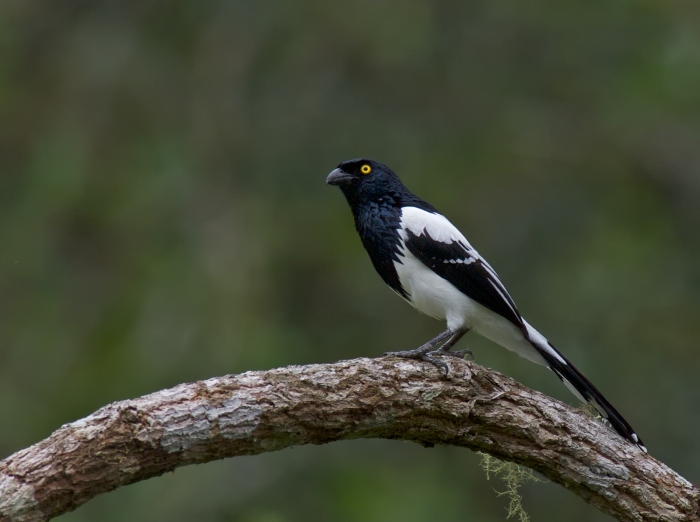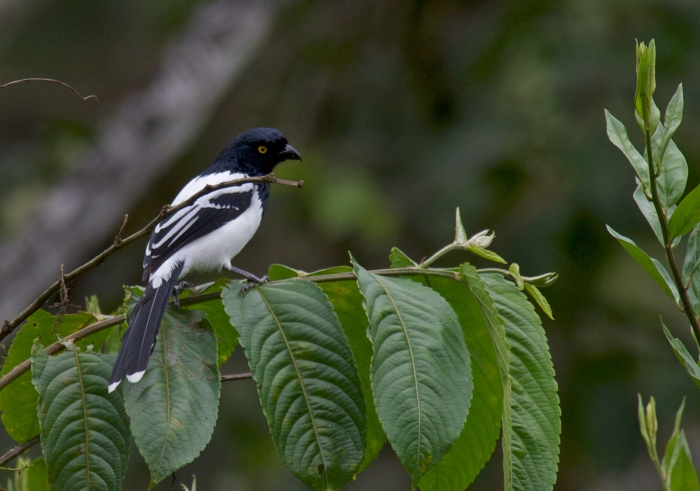Return of Bird of the Week: Magpie Tanager
This bird looks familiar, doesn’t it?

Magpie Tanager, Southern Ecuador
But looks can be deceiving. This isn’t a Black-billed Magpie with a weird yellow eye; this is a Magpie Tanager. It’s a fairly common bird of the South American lowlands, especially partially deforested and riverine areas. It’s monotypic: it’s the only species of the genus Cissopis.It’s also the longest tanager, thanks to that impressive tail.
And, WC has to say, it acts an awful lot like a magpie, too. Active and noisy; the behavior of the Magpie Tanager is often described as “jay-like.” The birds quickly hop from branch to branch in denser brush.

Magpie Tanager, Brazillian Panatanal
The distribution of Magpie Tanagers is odd, separated into three disjunct areas. Thye are most common on the Amazonian slops of the Andes, below 1,000 feet, but there are two other populations, one in southeastern Paraguay, southeastern Brazil, and northeastern Argentina and the other in northern South America, centered on northern Guyana, Suriname, and French Guiana. WC is unaware of any explanation of this patchy distribution.
As is the case with many Neotropical bird species, they are seriously under-studied. While the species is not believed to be threatened, that’s a guess; there is no published information available on age at first breeding, life span, survivorship, parasitism, or population regulation. Nor is there any explanation of why it evolved to appear (and act) so strikingly like a magpie.
For more bird photographs, please visit Frozen Feather Images.